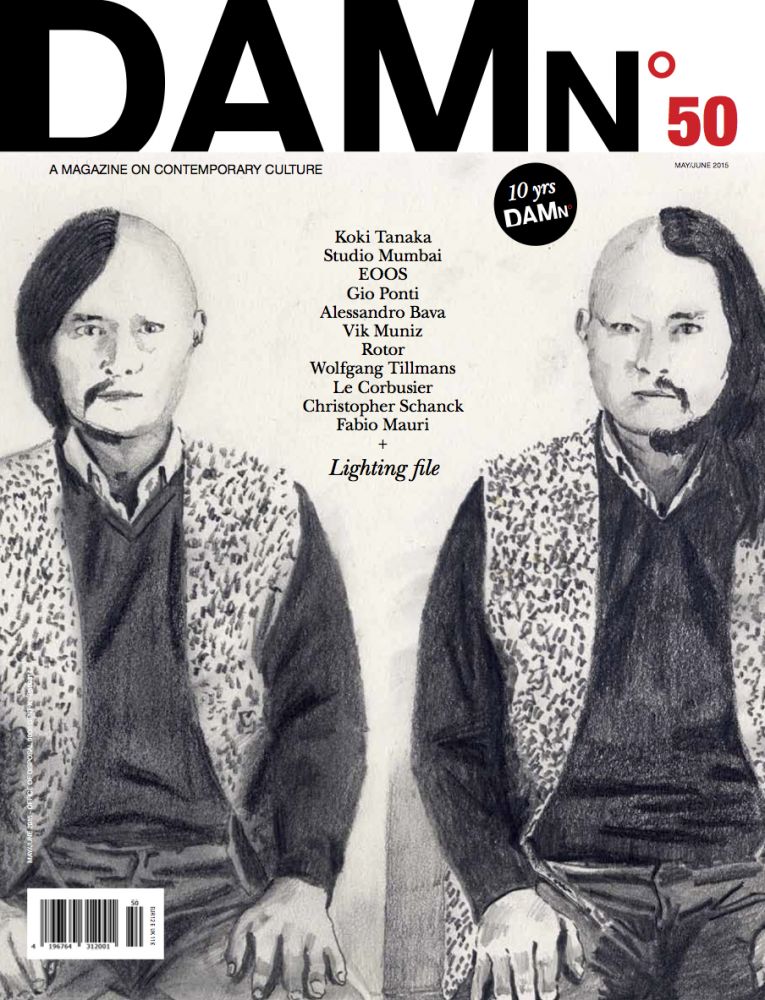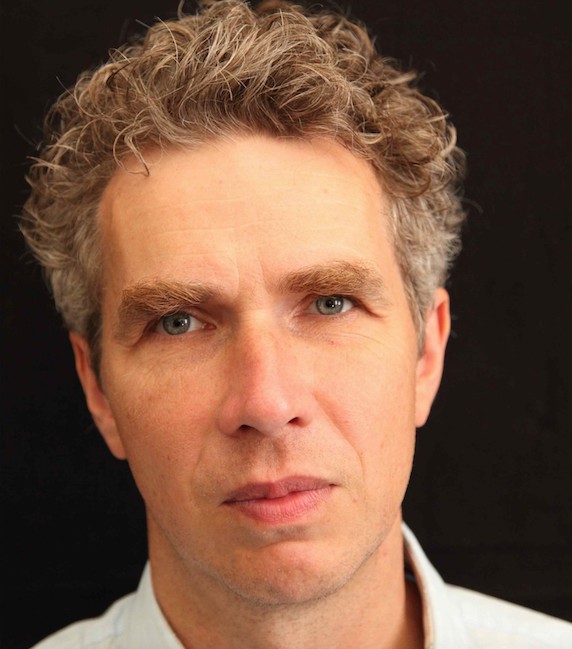Abstract Activism
Koki Tanaka’s narratives

Process of Blowing Flour, four-part series, 2010 Performance Photo: Tomo Saito
Anno 2015, Koki Tanaka became the Deutsche Bank’s sixth Artist of the Year. As is customary, a survey of his work is being presented in Berlin. Tanaka is unusual in two glaring respects – he prefers involving several people in the production of a unique work of art as opposed to making a work by himself, and the majority of his output comprises of the documentation of the situations he has devised, rather than of objects as such. And while his work is imbued with the traces of a political mindset, he tends to create short-lived idealistic moments with symbolic value, as opposed to making overtly activist gestures.
Short moments of utopia – that is the modest yet ambitious motive behind Koki Tanaka’s artworks. Or one could maybe speak of ‘situations’ rather than artworks, as Tanaka’s work is very much centred on encounters between people and the resulting interactions that take place. Objects may be part of that, but they usually do not function as stand-alone works intended for contemplation. Mainly, Tanaka is a director of encounters.
The artist’s current exhibition in Berlin, The Vulnerable Narrator, presents a survey of works produced since 2003. On display are multiple videos that document the actions and encounters he has organised. For instance, A Pottery Produced by 5 Potters at Once (Silent Attempt), 2013, shows five people sitting in a circle to make one clay pot. A member of the group suggests following a collective approach. Another participant counters that it is not about making a collective plan, but about each of them doing their own bit. And thus, a bowl is produced that is round in the middle but has five different designs on the sides. A similar situation occurs in A Piano Played by 5 Pianists at Once (First Attempt), 2012, in which five players all sit down behind the same grand piano to play a piece. Again, the friction between the individual and the collective is what is at stake here. The work challenges the old conviction that a single creator produces an artwork. Not so with Tanaka: he is interested in what happens when several people are in charge. Koki Tanaka was born in Japan and went to art school in Tokyo, but has been living in Los Angeles since 2009. Even though he was in L.A. when the 2011 earthquake shook Japan, the events (including the meltdown of the Fukushima nuclear power plant) affected his practice as an artist. He felt some reflection was needed on how people behave during or following crisis situations, though not in a direct way. In one of his Precarious Tasks, 2012, he asked people to bring some tea from home, whence he made a pot of tea using all of the various leaves and bags, and served it to everyone. Drinking this brew together became something ‘precarious’, since it was only a year after the Fukushima disaster and people were aware that the substances contained therein could well be contaminated.
In a series of drawings with the long but informative title of History is Written from Someone Else’s Perspective, Someone You Don’t Know. Making Our Own History Requires Each of Us to Rewrite It from Our Point of View, 2010, Tanaka has reproduced defining images from Japanese art history, such as a postcard that On Kawara wrote to John Baldessari, telling him “I got up at 8.01 am”, or a “Dropping Event” by the art collective Hi-Red-Center. Tanaka’s drawings are meant to recall Japan’s 1960s and 70s art scene, especially actions and happenings performed outside the conventional exhibition spaces. In so doing, he developed a deeper understanding of his own relationship to Japanese art history. Most of the material presented in the presentation consists of reports about (inter)actions that have taken place elsewhere in the past. Some of the filmed actions are well worth sitting down to watch, such as Someone’s Junk is Someone Else’s Treasure, 2011, in which the artist is at a flea market in Pasadena. Situated amidst vendors who are displaying valuable antiquities, Tanaka is trying to sell large palm tree leaves that are already starting to lose their colour – basically, items that would normally be regarded as rubbish. He likes to challenge the value of things. We see him discussing his merchandise with customers, and then a campus cop arrives and makes clear that his goods are not welcome, plus Tanaka does not have permission to film on campus. Thus his ‘action’ ends, while at the same time his art piece seems to succeed.
Tanaka has been praised for being a ‘participation artist’, and for his activism. He seems to have a rather realistic attitude, though, about the ability of art to engage the audience in the creative process. “Participation art doesn’t change anything”, he remarks. “Sure, art could do something, but maybe more symbolically. I cannot say I am a political artist. But after the earthquake and Fukushima, I thought maybe I should do something concerning this moment, and I found a way to deal with it.” Does Tanaka see his work as a kind of art activism? “Well, maybe a soft or weak form of art activism. We need all sides. Sometimes you need direct action, sometimes, indirect abstract action. That takes a longer time.” Tanaka is aware that he plays his game in the arena of the arts, which has a different speed and effect than politics. He is not really expecting his practice to merge with everyday life, and is content to bring about these short utopian moments that have
a symbolic meaning. The basis for this is a certain distance from reality. There is also something naïve about Tanaka’s attitude. Seeing his works in Berlin, one senses that he’s easily surprised about certain facts of life – for example, that there are so many people we do not know, so many options for conversations that never take place. This may be true, but to pronounce it as an insight or to elevate it to an art form seems a little farfetched. A more interesting aspect is Tanaka’s connection with objects. In the work Everything is Everything, 2006, you see somebody handling all kinds of cheap plastic items and reinventing uses for them. The actor does not change or modify any of these elements, he just uses them in unexpected ways. A film showing this playfulness reveals his joy in discovering the materials. It is not about making new things. It is all about redefining the given context. ‹
A Vulnerable Narrator is on view at the Deutsche Bank KunstHalle in Berlin until 25 May 2015. deutsche-bank-kunsthalle.de
 A Piano Played by 5 Pianists at Once (First Attempt), 2012 (2) Collective action, video documentation (57 min) The University Art Galleries, University of California, Irvine Courtesy of the artist.
A Piano Played by 5 Pianists at Once (First Attempt), 2012 (2) Collective action, video documentation (57 min) The University Art Galleries, University of California, Irvine Courtesy of the artist.
 A Pottery Produced by 5 Potters at Once (Silent Attempt), 2013. A collaboration, video documentation (75 min); Studio of Wang Feng and Han Qing, Beijing Courtesy of the artist, Vitamin Creative Space, Guangzhou, and Pavilion, Beijing
A Pottery Produced by 5 Potters at Once (Silent Attempt), 2013. A collaboration, video documentation (75 min); Studio of Wang Feng and Han Qing, Beijing Courtesy of the artist, Vitamin Creative Space, Guangzhou, and Pavilion, Beijing
 History is written from someone else’s perspective, someone you don’t know. Making our own history requires each of us to rewrite it from our own point of view. Chu Enoki: Went to Hungary with HANGARI, 1977, 2010. Pencil on paper, 22.9 x 30.5 cm Private C
History is written from someone else’s perspective, someone you don’t know. Making our own history requires each of us to rewrite it from our own point of view. Chu Enoki: Went to Hungary with HANGARI, 1977, 2010. Pencil on paper, 22.9 x 30.5 cm Private C
 Someone’s Junk is Someone Else’s Treasure, 2011 Action, video documentation (11min) HD video, 2 pencil drawings, palm fronds, blankets Pasadena City College Flea Market In collaboration with The Box, Los Angeles Courtesy of the artist, The Box
Someone’s Junk is Someone Else’s Treasure, 2011 Action, video documentation (11min) HD video, 2 pencil drawings, palm fronds, blankets Pasadena City College Flea Market In collaboration with The Box, Los Angeles Courtesy of the artist, The Box
 This article appeared in DAMN°50. Order your personal copy.
This article appeared in DAMN°50. Order your personal copy.

